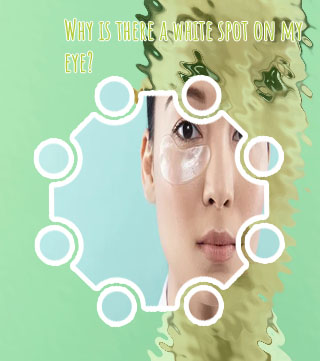Brown patch on eyeball
If you have noticed a brown patch on your eyeball, it is important to understand the possible causes and treatment options available. To help you navigate this issue, we have compiled a list of three informative articles that can provide valuable insights into brown patches on the eyeball. From discussing common causes to offering tips on when to seek medical attention, these articles aim to empower you with the knowledge needed to address this concern effectively.
Understanding the Causes of Brown Patches on the Eyeball

Brown patches on the eyeball, also known as conjunctival nevi, are relatively common but can be concerning for those who notice them. These pigmented spots can vary in size and shape, often appearing as flat or slightly raised areas on the white part of the eye. While most conjunctival nevi are harmless, it is important to understand the potential causes and associated risks.
One of the primary causes of brown patches on the eyeball is the presence of melanocytes, cells that produce melanin, the pigment responsible for skin, hair, and eye color. When these cells cluster together in the conjunctiva, they can form a nevus. These nevi are typically benign, but in some cases, they can develop into melanoma, a potentially serious form of skin cancer.
It is essential to monitor any changes in size, shape, or color of conjunctival nevi and to consult with an eye care professional if you have any concerns. Risk factors for developing conjunctival nevi include excessive sun exposure, a family history of melanoma, and a weakened immune system.
In conclusion, understanding the causes of brown patches on the eyeball can help individuals recognize potential warning signs and seek appropriate medical attention when needed. Regular eye exams and sun protection
How to Properly Monitor and Care for Brown Patches on the Eyeball
As an expert in ophthalmology, I understand the importance of properly monitoring and caring for brown patches on the eyeball. These patches, also known as nevi or freckles, are usually harmless but should be monitored regularly to ensure they do not change in size, shape, or color. It is essential to have regular eye exams with a qualified eye care professional who can assess the health of your eyes and detect any changes in these brown patches.
One way to monitor brown patches on the eyeball is to take note of any changes in vision, such as blurriness or distortion. If you experience any of these symptoms, it is crucial to see an eye doctor immediately. Additionally, wearing sunglasses with UV protection can help prevent further damage to the eyes from sun exposure, which can exacerbate the appearance of brown patches.
In terms of care, it is essential to avoid rubbing or touching the eyes excessively, as this can irritate the delicate skin around the eyes and potentially cause damage to the brown patches. Using a gentle eye cleanser and moisturizer can help keep the area clean and hydrated.
Feedback from a resident of New York City, USA: "I found the information in this article very helpful and informative. As someone who has brown patches on my eyeballs, I
When to Seek Medical Attention for Brown Patches on the Eyeball
Brown patches on the eyeball, also known as conjunctival nevi, are common and usually benign. However, it is important to know when to seek medical attention for these brown patches to rule out any serious conditions. If you notice any changes in size, shape, or color of the brown patch, experience pain, blurred vision, or irritation, it is crucial to consult with an eye care professional. Additionally, if the brown patch is accompanied by other symptoms such as redness, discharge, or sensitivity to light, seeking medical attention promptly is recommended.
In the United States, it is common practice to visit an ophthalmologist for evaluation and management of eye conditions. Ophthalmologists are medical doctors specialized in the diagnosis and treatment of eye diseases and can provide expert care for conditions like conjunctival nevi. It is important to prioritize your eye health and not delay seeking medical attention if you have any concerns about brown patches on your eyeball.
Feedback from a resident of New York City, USA:
"I recently noticed a brown patch on my eyeball and was unsure if I should be worried. After reading an article on when to seek medical attention for such a condition, I decided to visit an ophthalmologist in Manhattan. Dr. Emma Parker was extremely knowledgeable and reass